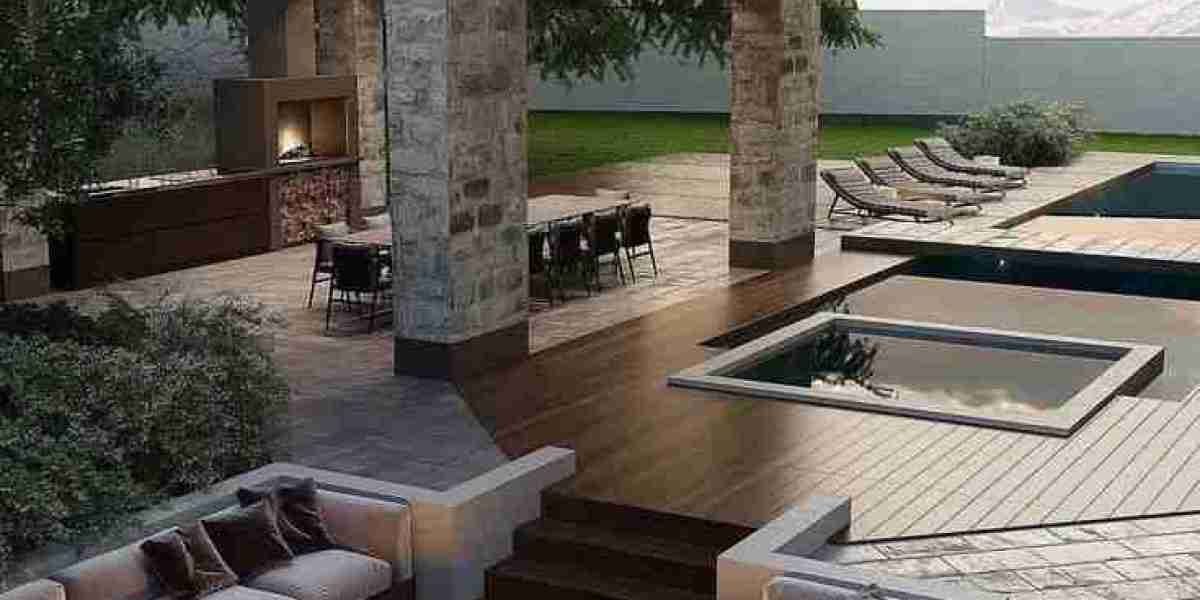Decks provide an excellent way to expand your living space, offering a place to entertain, relax, or enjoy nature. Choosing the right deck material is essential to creating a functional and visually appealing outdoor space. The material you select affects the deck's longevity, appearance, and overall maintenance. In this article, we’ll explore the different types of deck material available, their benefits, and what you should consider before making a decision.
Types of Deck Materials
1. Wood Decking
Wood remains one of the most popular materials for building a deck. Traditional and timeless, wood decking offers natural beauty and charm. The most common types of wood used for decking are:
Pressure-Treated Lumber
Pressure-treated lumber is the most budget-friendly option. It’s made from softwood (typically pine) that is treated with preservatives to protect it from rot, insects, and moisture. This type of wood requires regular maintenance, including sealing and staining, to maintain its appearance and longevity.
Cedar and Redwood
Cedar and redwood are naturally resistant to decay and insects, making them a popular choice for those who want a more durable and aesthetically pleasing wood option. These woods have a natural resistance to the elements, but they may require occasional staining or sealing to preserve their color and texture.
Tropical Hardwoods
Tropical hardwoods like teak, ipe, and mahogany are known for their exceptional strength and natural resistance to the elements. While these woods are more expensive than softwoods, they provide a long-lasting, beautiful finish and require minimal maintenance.
2. Composite Decking
Composite decking is a popular alternative to traditional wood decking. Made from a blend of wood fibers and plastic, composite decks are durable, low-maintenance, and resistant to fading, staining, and scratching. There are two main types of composite decking:
Capped Composite Decking
Capped composite decking features a protective layer around the wood-plastic composite core. This protective shell offers added resistance to moisture, mold, and mildew. Capped composites are also more stain-resistant and require less maintenance than traditional wood decking.
Uncapped Composite Decking
Uncapped composite decking is composed of a blend of wood fibers and plastic without the protective layer. While it is still durable and low-maintenance, it is more susceptible to moisture and fading over time compared to capped composites.
3. PVC Decking
PVC decking is made entirely from plastic, offering a high level of durability and weather resistance. It is highly resistant to moisture, rot, and insects, and it’s also incredibly easy to clean. However, PVC decking can get hot under the sun, which may not be ideal for areas with intense heat.
PVC decking is available in a range of colors and textures, often mimicking the look of wood. It’s a popular option for homeowners who want a low-maintenance, long-lasting deck that won’t warp, crack, or splinter.
4. Aluminum Decking
Aluminum decking is one of the most durable materials available. It’s lightweight, strong, and resistant to rust, rot, and insects. Aluminum is an excellent choice for homeowners in areas that experience extreme weather conditions, including heavy rain, snow, and high heat.
Aluminum decking often comes with a powder-coated finish, which helps maintain its appearance and protect it from the elements. Though it can be more expensive than other options, it’s a long-term investment due to its low-maintenance nature and long lifespan.
Factors to Consider When Choosing Deck Material
When deciding on the best material for your deck, consider the following factors:
1. Climate and Weather Conditions
Your region’s climate plays a significant role in determining which material will perform best. For example, if you live in an area with high humidity or frequent rainfall, composite or PVC decking may be more suitable due to their water resistance. In dry, sunny climates, natural woods like cedar or redwood may provide an attractive, durable solution.
2. Maintenance Requirements
Some materials, like wood, require regular maintenance (sealing, staining, etc.) to keep them looking great. If you want a low-maintenance option, composites, PVC, and aluminum might be the better choice. These materials don’t require as much attention and can withstand the elements for years.
3. Budget
The cost of decking materials varies widely. Pressure-treated wood is the most affordable, but it may require more upkeep over time. Tropical hardwoods and aluminum are pricier options, but they offer greater durability and less maintenance. Consider both the upfront and long-term costs of materials before making a decision.
4. Aesthetic Appeal
The aesthetic of your deck is an important factor in selecting the right material. If you want a natural wood look, then cedar, redwood, or pressure-treated lumber could be ideal. On the other hand, composite, PVC, and aluminum offer more variety in terms of colors and finishes, mimicking the look of wood or offering modern designs.
Conclusion
Choosing the right deck material requires careful consideration of your needs, budget, and the climate of your area. Whether you prefer the classic appeal of wood, the low-maintenance benefits of composite or PVC, or the durability of aluminum, there’s an option for every homeowner. By weighing the pros and cons of each material, you can ensure that your deck will enhance your outdoor space for years to come.




